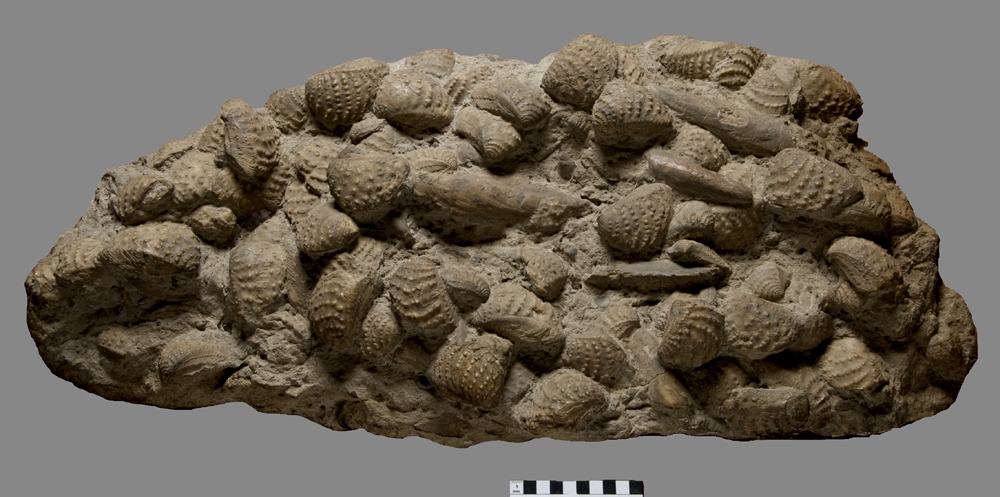There are Myophorella clavellata and Gervillia bivales on this block. Notice how all of the shells are lying in the same orientation. This suggests that a strong current was flowing across the sea bed when these animals became buried. Convex shells tend to flip over with the curved face uppermost as this is a more stable angle than the other way around. This is known as a ‘way up structure’ and can be really useful in mountain ranges where earth movements have folded the rocks so extremely that they might be upside down.

